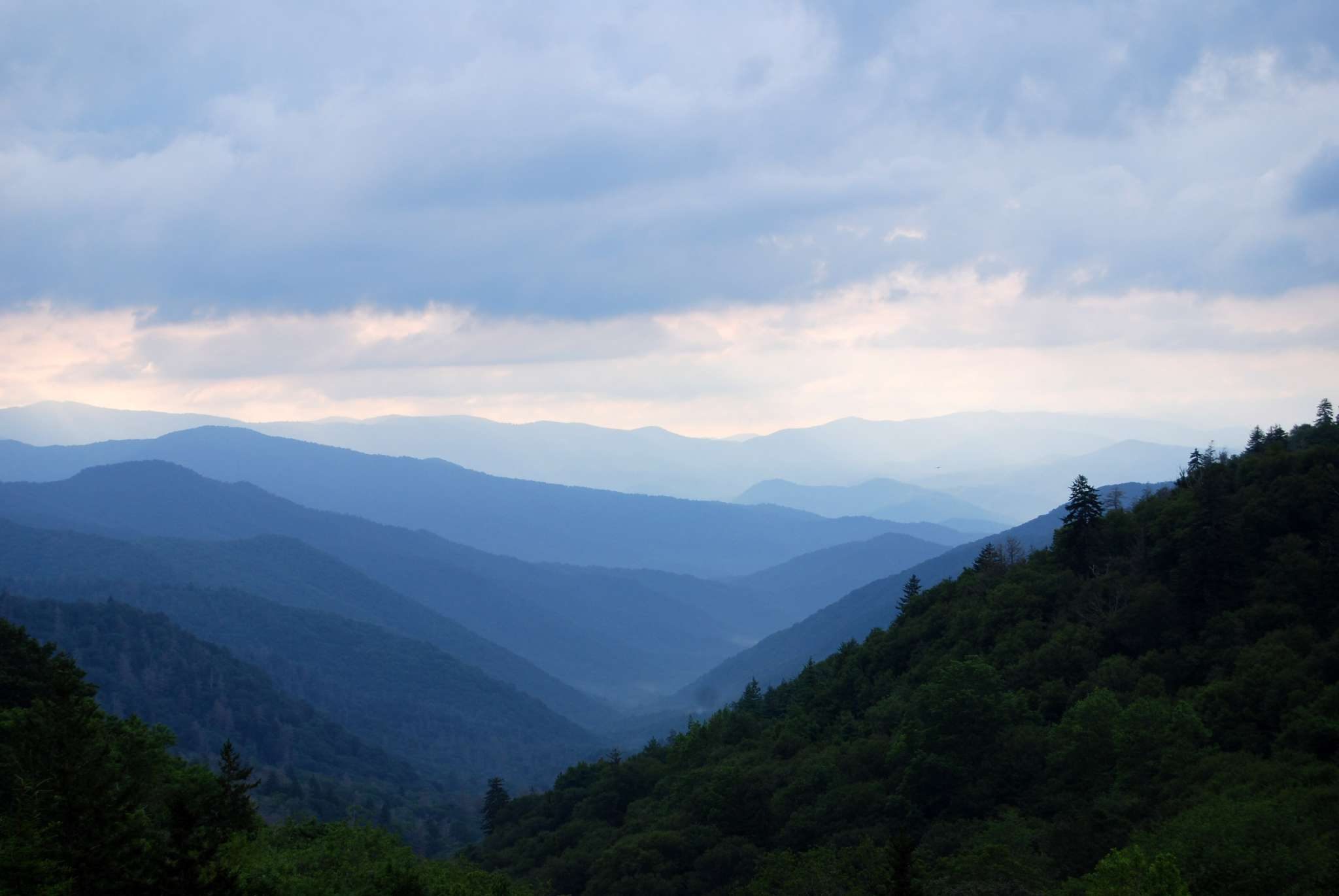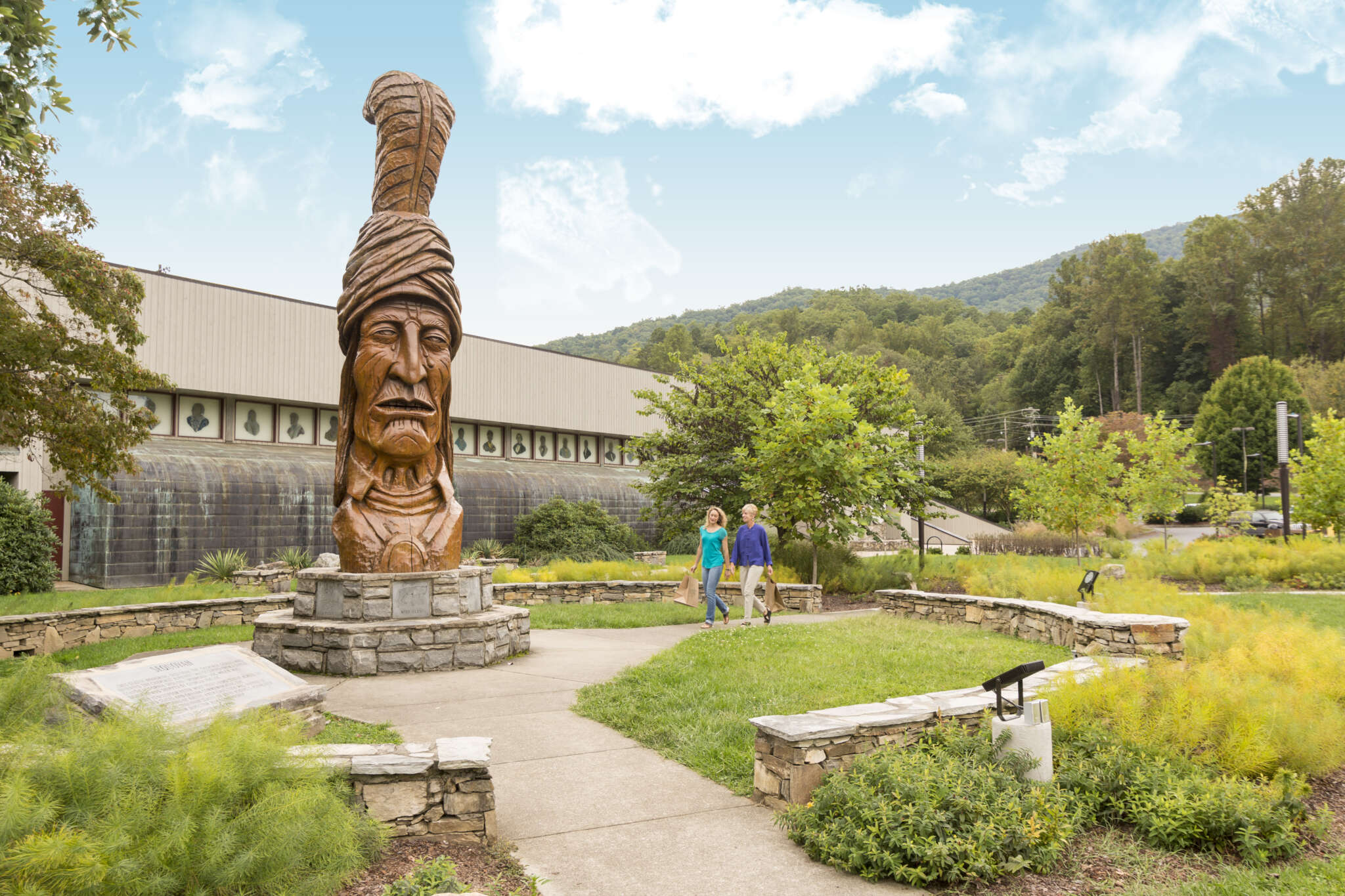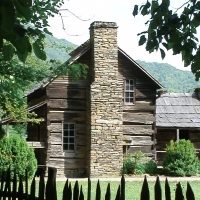
The Great Smoky Mountains National Park is the most visited National Park in America. Covering more than half a million acres in Western North Carolina and Eastern Tennessee, the Park attracts nature-lovers, hikers, campers, fishermen, photographers, and other travelers looking for beauty, refreshment, and renewal of spirit.
Created in 1934, the Park and its mountains take the name “Smoky” because of the soft, blue haze that hovers over the Great Smoky Mountains range, especially in summer.
An International Biosphere in NC Blue Ridge Mountains
Because of its remarkable biodiversity, the Great Smoky Mountains National Park was designated an International Biosphere Reserve in 1976 and a World Heritage Site in 1983. No other area of similar size and climate has as many documented species of plants, animals and invertebrates. Scientists have recorded more than 10,000 species, but believe there to be nine times as many.
Two hundred bird species, including red-eyed vireos, peregrine falcons and more than 30 kinds of warblers can be spotted in the Great Smoky Mountains National Park. The Great Smoky Mountains are also home to 30 species of salamanders, a distinction that makes this the “salamander capital” of the United States.
Click below to hear a Living Traditions Moment about Biodiversity in Western North Carolina
This video of Deep Creek Waterfalls and Wildflowers from Great Smokey Mountains Association was made possible by a Blue Ridge National Heritage Area Grant.
Ancient Mountains and Old Growth Forests
The Great Smoky Mountains are among the oldest mountains in the world. An unbroken, 36-mile chain of ridges over 5,000 feet in elevation runs the length of the Great Smoky Mountains National Park. Visitors can enjoy spectacular views from the highest peak, Clingman’s Dome, at an elevation of 6,642 feet. Clingmans Dome is the highest point in the Great Smoky Mountains National Park, the third highest point in the east of the Mississippi, and provides one of the most scenic viewpoints in the United States.
Nearly a quarter of the Great Smoky Mountains National Park is old-growth forest. The Park protects one of the largest blocks of deciduous, temperate, old-growth forest remaining on the continent.
The following video project from Great Smoky Mountains Association was made possible by a grant from the Blue Ridge National Heritage Area. The video takes you on a journey through one of the most interesting mountain ecosystems in the country. The views and conclusions contained in this document are those of the authors and should not be interpreted as representing the opinions or policies of the U.S. Government. Mention of trade names or commercial products does not constitute their endorsement by the U.S. Government.
© GSMA 2012. All rights reserved
A Place of Cultural Preservation
In addition to its natural attractions, the Great Smoky Mountains National Park is a place of cultural preservation, featuring some 77 historic structures which provide a window into how early inhabitants once lived in the area.
The Park’s Mountain Farm Museum is an outstanding collection of historic log structures which includes a farmhouse, barn, apple house, springhouse and a working blacksmith shop.
At the nearby 1886 Mingus Mill, a miller demonstrates the process of grinding corn using a water-powered turbine rather than a water wheel.
Within the picturesque Cataloochee Valley, the Park preserves remnant buildings from a once large and prosperous settlement. Cataloochee is a beautiful, fairly remote valley nestled on the North Carolina side of Great Smoky Mountains National Park. Elk have been re-introduced into this part of the Park and can often be seen from the roadside. Learn more in this video from Great Smoky Mountains Association and the Blue Ridge National Heritage area.
Oconaluftee Visitor Center
In April 2011, a 6,300 square foot visitor center was opened at the Park entrance near Cherokee. In addition to offering visitor information and orientation, the center also has museum-quality interpretive exhibits of the history of the park’s land, from pre-historic times through the 20th century.
The Oconaluftee Mountain Farm Museum in Great Smoky Mountains National Park is a collection of historic structures from throughout the park gathered and preserved as an outdoor living museum.
Hours of Operation
Hours of operation vary throughout the year and can be found on the Park’s website.
Admission Fees
The Great Smoky Mountains National Park began requiring a parking tag on March 1, 2023. Visit the park’s website for details.
Location
Several major highways lead to the Park. The following routes provide access to the three main entrances.
Cherokee, NC entrance: From I-40, take US Route 19 West through Maggie Valley. Proceed to US-441 North at Cherokee into the Park.
From Atlanta and points south: Follow US-441 and 23 North. US-441 leads to the Park.
Gatlinburg, TN entrance: From interstate highway I-40, take Exit 407 (Sevierville) to TN Route 66 South, and continue to US-441 South. Follow US-441 to the Park.
Townsend, TN entrance: From interstate highway I-40 in Knoxville, take exit 386B US-129 South to Alcoa/Maryville. At Maryville, proceed on US-321 North through Townsend. Continue straight on TN Highway 73 into the Park.
Great Smoky Mountains National Park
107 Park Headquarters Road
Gatlinburg, TN 37738
Visitor Information Recorded Message: (865) 436-1200
Cherokee Welcome Center
498 Tsali Boulevard
Cherokee, NC 28719
800-438-1601







